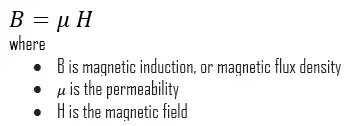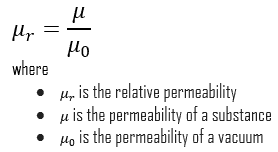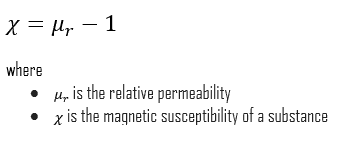In electromagnetism, permeability is the measure of the resistance of a substance against the formation of a magnetic field. The auxiliary magnetic field H represents how magnetic field B influences the organization of magnetic dipoles in a given substance. The magnetic field strength and flux density are related according to:
In this equation, B represents the magnitude of the internal field strength within a substance subjected to an H field. The permeability has dimensions of webers per ampere-meter (Wb/A.m) or henries per meter (H/m). The permeability constant μ0, also known as the magnetic constant or the permeability of free space, is a measure of the amount of resistance encountered when forming a magnetic field in a classical vacuum. This constant is very important since one of the important magnetic properties is the relative permeability (dimensionless), the ratio of the permeability in a material to the permeability in a vacuum.
According to the NIST reference on fundamental physical constants, the magnetic constant has the exact (defined) value
μ0 = 4π × 10−7 H/m ≈ 12.57×10−7 H/m.
A closely related property of materials is magnetic susceptibility, a dimensionless proportionality factor that indicates the degree of magnetization of a material in response to an applied magnetic field.


